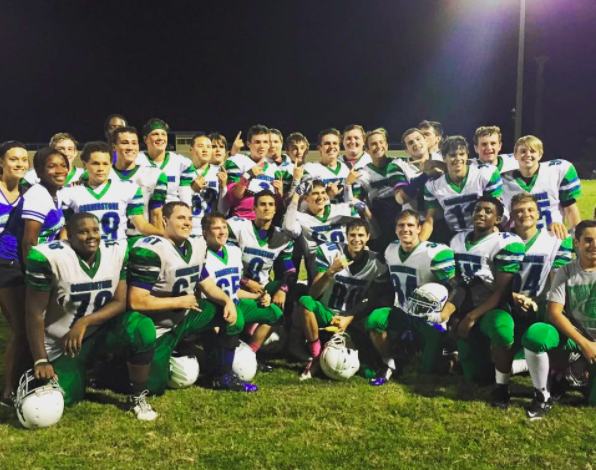“I love technology,” is a classic line from the 2004 indie film Napoleon Dynamite. Technology is a fantastic tool in the world of sports coaching and strength and conditioning. I’ve adopted tech both as a sport coach and as an S&C coach to optimize my practice plans, training programs, and to monitor speed sessions. Whether you’re using TeamBuildr Practice for your drills and practice plans, TeamBuildr Strength for your S&C programming, Hudl for film exchange, or a Freelap Timing System for speed training. Technology does wonderful things for coaches and players alike.
GPS and LPS
GPS (Global Positioning System) technology is another tool, much like a Freelap, that bridges the worlds of the sport coach and the strength coach. Brands like Catapult provide a popular GPS tool, while LPS (Local Positioning System) is popular for indoor sports use, with brands like Catapult and KINEXON leading the way. GPS and LPS tools track athlete performance data, such as total distance, sprint distance, top speed, and power output, to name a few. When analyzed, the data can help optimize practice and training protocols, and possibly mitigate injury by detecting overtraining, undertraining, and sudden drop-offs in performance. When you work for a professional franchise or in a major college athletics department, there are typically people assigned to monitor data such as GPS. At the high school level, it will truly depend on how large your strength and conditioning and sport coaching staff truly are.
The High School Coach
As high school coaches, we enter into a world of trade-offs and opportunity costs as we’re typically understaffed, underpaid, and often teaching a full course load. Do I want to sacrifice time with my family at night in the name of analyzing GPS data? I’m not telling you how to live your life, but if the answer isn’t a heck yes, it’s a no.
When I was a head football coach, we used a grant to pay for Hudl, as our budget was $0 from the school. It was charter school football, and we used a player fee of $200 in order to pay for helmet reconditioning, referees, and buses to games.

Our program had four stipends, including mine, to be given out to our coaching staff. We couldn’t afford GPS, nor could we afford the coach who would have to monitor GPS. When it comes to trade-offs, I would much rather have had power racks, bumper plates, and new footballs rather than GPS technology or a stipend for a data analyst. Not every program suffers the same fate of budget or lack thereof.
The Benefits of GPS Technology
If your program does have the resources for GPS, here are the reasons why I think it would be a great tool to use. Also, I think it’s actually a more important piece of tech for ironman teams versus two-platoon teams, even though typically the larger teams will hold the larger budget.
In the Lean Canvas Business Model, a popular tool for technology startups and nonprofit organizations, the first question the co-founders must answer is what pain points will your product or service solve for the potential customer? I like to pose pain points as questions. The three pain points GPS could solve for you as a sports coach are:
1- Does your off-season program prepare you for preseason camp?
2- Does your camp prepare you for the season?
3- Are you overtraining or under-training during the season?
1 Does your off-season program prepare you for preseason camp?
Off-season programs in all sports have long been high on mindless conditioning and low on game preparation. While there’s a ton of data on professional and collegiate sports and the demands those require, there isn’t as much data about high school athletics for the obvious reasons we stated earlier in this article (money, time, staff).
To be able to analyze things like summer league games (basketball), 7-on-7 (football), and freestyle events (wrestling), and compare them to preseason camp, I’m sure would deliver some interesting data. It could even keep your coaching staff from marathon opening week practice sessions that often result in injuries and heat-related illnesses.

Caption: Sled drills in Willamina, Oregon from 2016
As a head football coach, our off-season workouts were Monday through Thursday for under two hours. We usually had a 30-minute field session followed by a 15-minute break before an hour lift session. After the workout, our athletes stretched, cleaned up, and went home.
Our preseason camp was typically Monday through Friday for two hours a day. We would often lift for 30 minutes before practice and then hit the field for the better part of 90 minutes. Thus, our timing was fairly similar when comparing the off-season to the preseason, but I was never aware of the actual demand differences between workouts and practice without GPS at my disposal.
2 Does your preseason camp prepare you for the season?
Once the games begin the data regarding inseason practices and games should start to pile up. Comparing that data to preseason camp, and the off-season program, can make for some telling comparisons.
If every block of the annual calendar is supposed to build on and prepare for the ultimate goal, playoffs, they should have some similarities in the number of contacts. Overtraining can cause injuries due to the sheer amount of volume during camp sessions if your staff decides to practice for three hours.
Undertraining can cause injuries because athletes aren’t prepared for the next block on the calendar. Most sports are visual-cognitive-motor sports. Ie. they require true agility not just change of direction. Yet, many off-season programs only train COD until camp or some kind of scrimmaging (7-on-7) begins.
If your sport requires 3-4 top-end speed moments and your training programs zero of those moments your staff is setting athletes up to be undertrained and thus opening the door to injuries because of the lack of preparation. A GPS could tell the coaches not only what is required during play, but how many reps and at what percentage of the athletes’ top-end speed, for instance.
3- Are you overtraining or undertraining during the season?
It’s a mix of science and art to prepare a team to move into the next block and GPS would help assist with the science part of that equation. Previously, we’ve discussed making sure to program into practice or strength training the right intensity and volume of certain key performance indicators of success.
In the example above, I used top-end speed to make my point. If wide receivers or left wingers are hitting top-end speed 2-3 times per game. We have to prepare our athletes for those exposures. Coaches also have to keep athletes fast, and if max velocity starts to diminish after ~five days, hitting the top-end has to be included in the practice plans or S&C programming every week.
GPS could tell us if our athletes are practicing slower during the week and thus are going to be more likely to be injured or cramp due to fatigue once the games begin. It’s one thing to watch players practice and another to have actual data from their on-field performances.
The quest to learn more
I am forever on a quest to learn more, and I think that’s the mindset we should all have as coaches. I adopted this mindset from my dad, a baseball coach and firefighter who was always attending camps and clinics while buying VHS tapes and books on topics from fielding to base running.

Caption: My dad serving as team photographer in 2013.
He was the first person to introduce me to shock drop plyometrics, overspeed training and biceps curls, and this was all in the early 90s! The old guy was certainly ahead of his time when it came to speed training.
Having access to GPS data on your athletes could be a learning experience like no other. It would be real-time data that is about the actual players you are working with as opposed to college and professional teams from a book or website.
However, we have to utilize our resources wisely, and most high school coaches are also teaching or have full-time jobs off-campus, and are inundated with things like parent emails, fundraising, paperwork, Hudl tagging, practice planning, and game planning for the upcoming opponent. Without the resources of time, money, and staff allocations, technology like GPS is a dream but not a feasible reality.
Citations
Young, D. (2024, July 10). Monitoring Training Load with GPS: Practical Guidance for Team Sport Coaches. Setanta College. https://www.setantacollege.com/monitoring-training-load-with-gps-practical-guidance-for-team-sport-coaches/
Technology in Sports: What Does LPS Stand For? Kinexon Sports. https://kinexon-sports.com/blog/what-does-lps-stand-for/
Mullen, S. (2016, June 17). An Introduction to Lean Canvas. Medium. https://medium.com/@steve_mullen/an-introduction-to-lean-canvas-5c17c469d3e0
Subscribe to our blog
Subscribe to receive the latest blog posts to your inbox every week.
Related posts
.png?width=721&height=475&name=Sport%20Coach%20(4).png)
NIL Developments: Coach and Player Outcomes

Program Culture is Built on the Field
